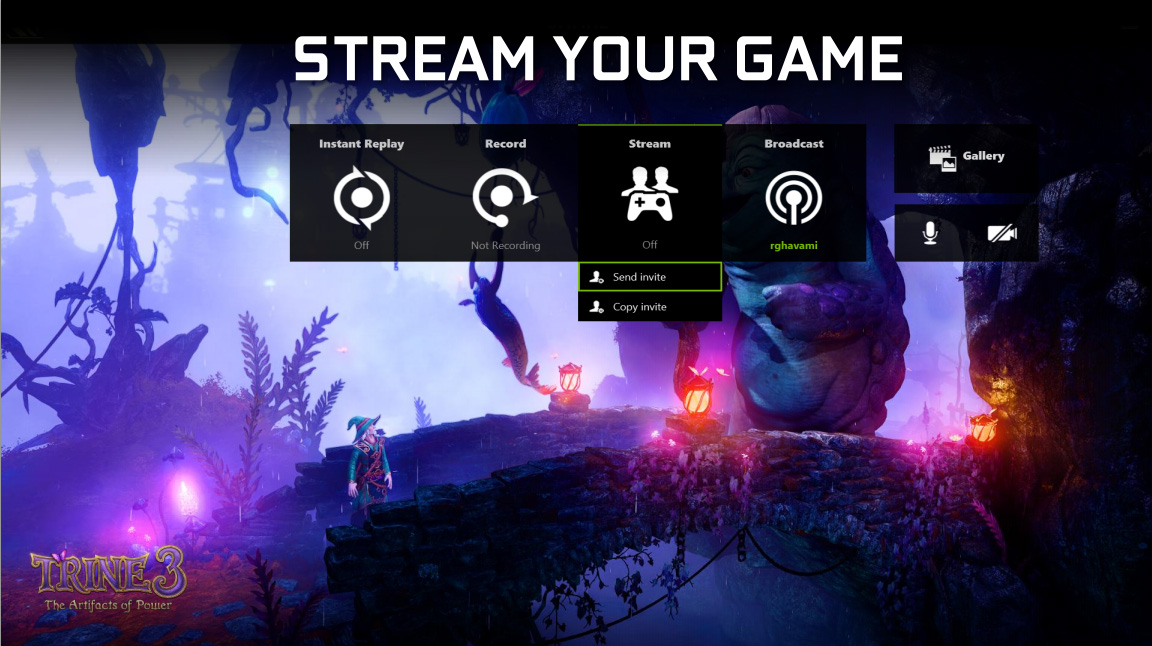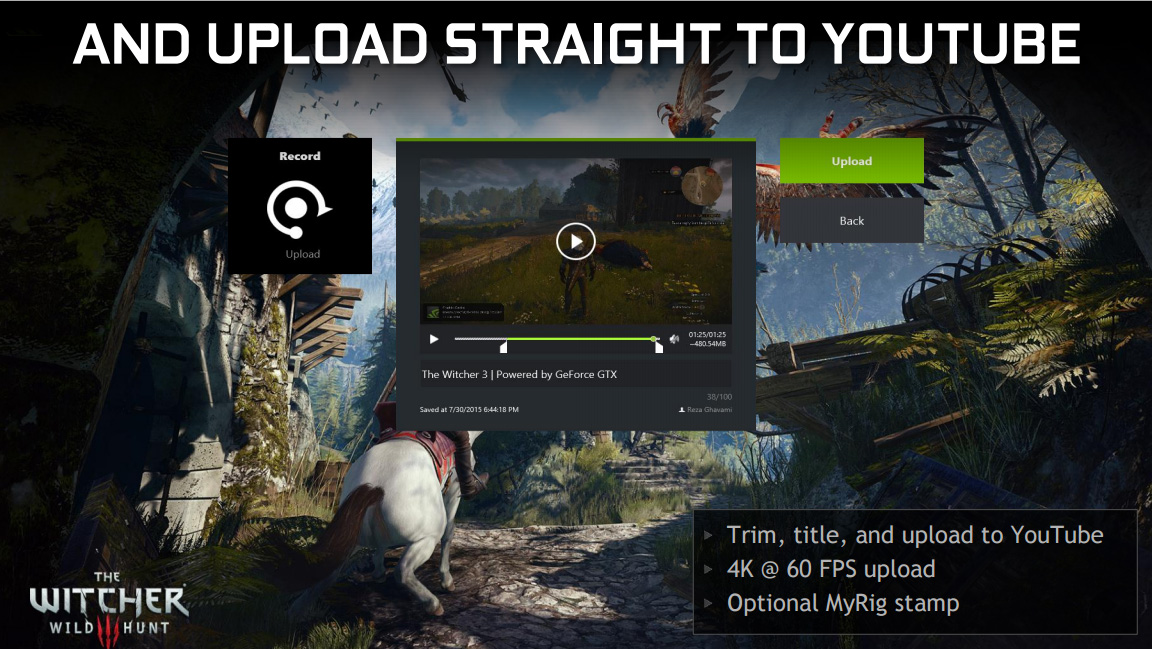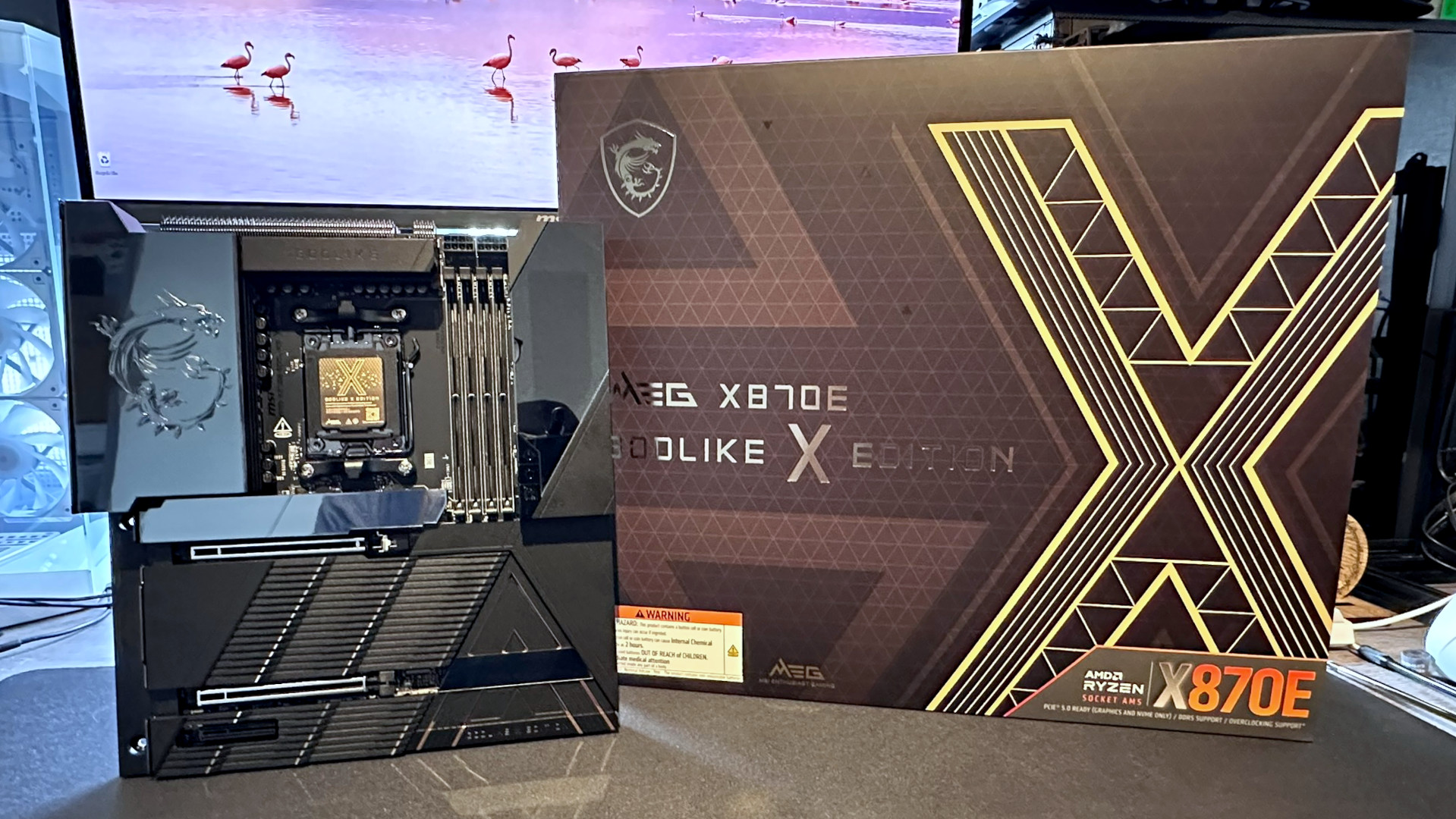Nvidia 'Share' adds streaming features to GeForce Experience

Along with the release of the GTX 950, Nvidia is working on an update to its GeForce Experience software that adds a new feature called Share, built around streaming gameplay video to Twitch or to a single friend with a direct, encrypted stream. Share’s big selling point is the latter form of streaming, which Nvidia calls GameStream Co-Op; you email a friend an invite to the stream via GFE, and can talk over integrated voice chat, give them direct control of the game, and let them jump in for co-op.
Think of this sort of Share streaming feature along the lines of Steam’s In-home streaming or Nvidia’s PC-to-Android GameStream, or even OnLive. The principle is similar: your local machine is running the game and using the GPU’s hardware encoder to spit out a video stream, which you’re then sending out to a client device.
Nvidia encrypts the connection between the two PCs, which lets them feed control inputs back from the client device. That means your friend can play based on the video stream they’re getting and take control of your game. Nvidia’s currently limiting the feature to fullscreen gaming only to prevent the client from gaining access to your desktop. If someone has ever remote desktoped into your PC and proceeded to rename every file on your desktop, you’ll probably be glad to hear about that limitation. Currently, the client device will have to use Google Chrome with GameStream, simply because that’s the browser Nvidia has written an applet for.
Because the game being streamed has no idea that it’s being played remotely, co-op play obviously only works with games that support local cooperative play. You could also use the feature for a multiplayer game like Towerfall, but from my brief hands-on with an early beta, lag would make the matchup unplayable.
Nvidia demoed GameStream Co-Op functionality with Trine 3, and I felt a significant amount of latency—I’d say roughly half a second to a second—between my controller inputs and seeing the action take place on screen. The streamed game was running side-by-side with the native system, and in that context the degradation in image quality was glaring. Share streams at 720p, 30 fps, with some noticeable pixelation from the video encoding.
Nvidia told me that they aren't designing GameStream Co-Op to support entire game playthroughs; they've spoken with developers about the possible concern of players streaming an entire game to their friends. Currently, a stream shuts off after an hour of play.
Another note: you can't use Instant Replay, Twitch streaming or GameStream Co-Op simultaneously, but Nvidia is aware people want to be able to record while streaming.
Keep up to date with the most important stories and the best deals, as picked by the PC Gamer team.

The Twitch streaming and basic video editing capabilities of Share may appeal to more gamers. The Youtube integration, in particular, pairs well with GFE’s Instant Replay recording. Share now has an in-game overlay a la Steam, where you can access recording and streaming settings. If you’ve recorded gameplay with Instant Replay, you can trim the beginning and ending off a clip and upload it straight to Youtube after signing into your account. Doing all that without quitting out of a game is convenient, although more dedicated videographers will likely still prefer to manually record gameplay and edit with more robust tools.
ShadowPlay is being folded into Share, with all of its recording options—bitrate, framerate, resolution up to 4K—still intact.
Nvidia didn’t give a final release date for the Share-enabled GFE, but an early access build should be coming in September, so expect a public build to follow. I’m hopeful that the early access release (and especially the following public build) improve GameStream Co-op’s latency enough for it to become a great feature, because from my short hands on, it’s just a bit too laggy to be fun.

Wes has been covering games and hardware for more than 10 years, first at tech sites like The Wirecutter and Tested before joining the PC Gamer team in 2014. Wes plays a little bit of everything, but he'll always jump at the chance to cover emulation and Japanese games.
When he's not obsessively optimizing and re-optimizing a tangle of conveyor belts in Satisfactory (it's really becoming a problem), he's probably playing a 20-year-old Final Fantasy or some opaque ASCII roguelike. With a focus on writing and editing features, he seeks out personal stories and in-depth histories from the corners of PC gaming and its niche communities. 50% pizza by volume (deep dish, to be specific).

